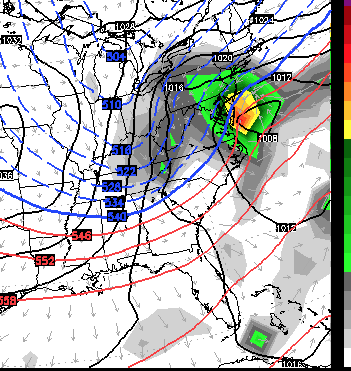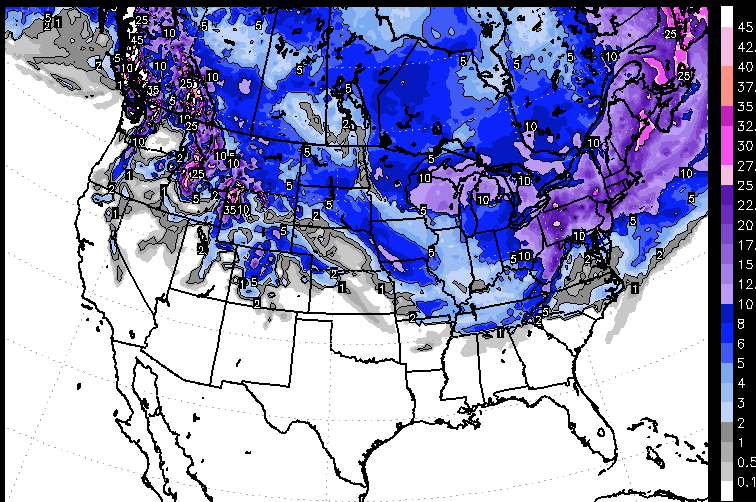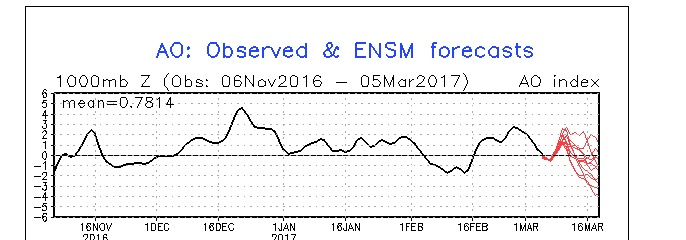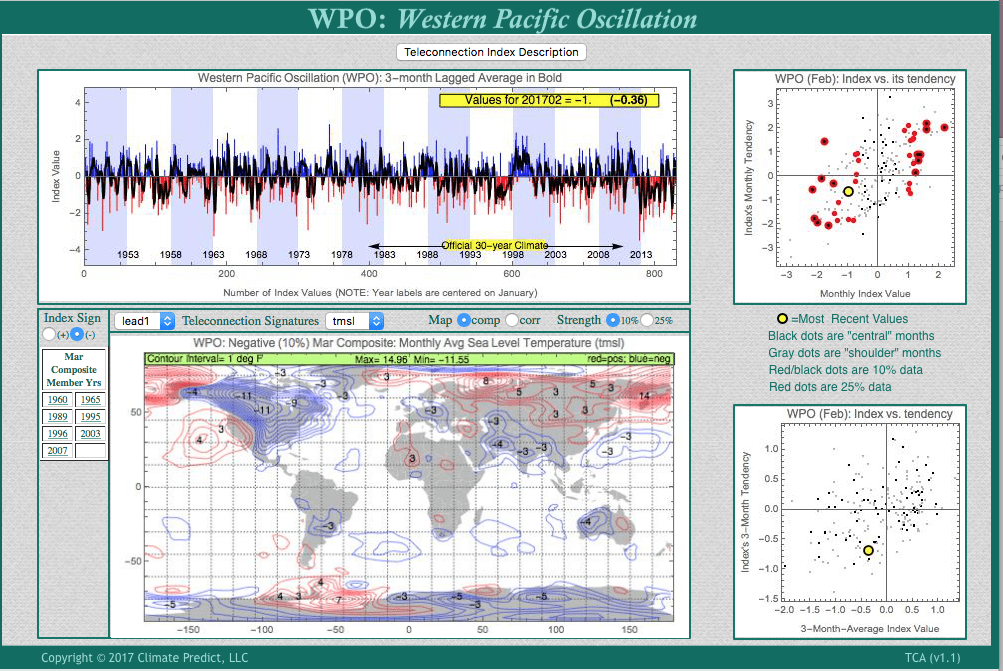(Map Above) CLIMATECH AND MARCH TEMPS WITH A NEGATIVE WPO INDEX NORTHWEST OF ALASKA AND OVER NORTHEAST EURASIA. Normally this should suggest a colder March, but due to a developing El Nino, melting global sea ice and a warming planet, any sustained cold has not been the rule this winter. Natural gas prices have rallied at times even when March and April have been warm.

The -AO and -WPO on the front page, from our program, Climatech, suggests a possible big Nor’easter around the 14th, as well as snows this Friday.
For the first time in weeks, we see the Arctic Oscillation go negative. This offers some colder risks and snow for the upper Midwest and the Northeast into mid- March and offers a potential bottom in the natural gas market and some treacherous driving conditions for parts of the Northeast, especially after the 14th As the map below shows, some places in the Northeast could see more than 10-15″ of snow. Some ski resorts will benefit from late season snows in Vermont, New Hampshire, Maine and upstate New York, which have seen a warm winter and freeze-thawing lately.

Total snowfall next 2 weeks
SNOWFALL PROJECTIONS (above). Ensemble maps from WSI

Arctic Oscillation index has been positive most winter, but you can see it heading slightly negative for the first time in weeks. The main impetus for the colder weather has to do with a weather feature, thousands of miles away over Northeast Asia. (negative WPO index–map below). Notice the colder mid-late March forecast (blue). Nevertheless, the warm Atlantic and a developing east-based El Nino have resulted in a warm winter pressuring natural gas prices and various natural gas equities. However, given colder weather and snows into mid-March, the natural gas market has built into much of the winter bearishness.












